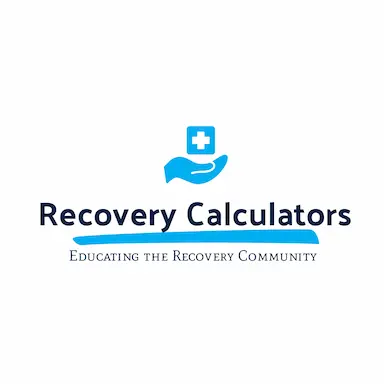Alcohol and Anxiety: The Risks of Anxiety With Alcohol

Peering into the shadows of alcohol and anxiety: Shed light on the harmful effects of alcohol on anxiety levels and discover approaches to restore inner calm.
Tramadol and Alcohol: Dangers of Alcohol and Tramadol

Discover the risks associated with tramadol and alcohol consumption: why it’s crucial to avoid this dangerous combination.
Alcohol and Hair Loss: Are They Connected?

Discover the surprising connection between alcohol and hair loss. Uncover how excessive drinking may impact your locks.
Zoloft and Alcohol: Mixing Alcohol and Zoloft Effects

Discover the potential risks and interactions of combining Zoloft and alcohol. Learn about the effects and precautions for a safer mental health journey.
Using CIWA to Help Measure Alcohol Withdrawal

Alcohol withdrawal can be a challenging and dangerous process. For those who are dependent on alcohol, stopping or reducing intake can lead to severe physical and psychological symptoms. This is where the CIWA (Clinical Institute Withdrawal Assessment for Alcohol) comes into play. CIWA is a valuable tool used by healthcare professionals to measure and manage these withdrawal symptoms. Understanding CIWA and Its Importance The Clinical Institute Withdrawal Assessment for Alcohol (CIWA) is a vital tool used by medical professionals to monitor and manage alcohol withdrawal symptoms. This assessment helps ensure the safety and comfort of individuals undergoing detoxification from alcohol. Given how alcohol withdrawal can lead to severe complications such as seizures or delirium tremens, CIWA is essential in predicting and preventing these risks. CIWA is not just a simple checklist; it is a comprehensive scoring system that assesses various physical and psychological symptoms of alcohol withdrawal. Each symptom is rated on a scale of 0 to 7 based on its severity, with the total score guiding the treatment approach. A higher score signifies more intense withdrawal symptoms and indicates a need for more intensive medical intervention. The significance of CIWA lies in its structured approach to monitoring withdrawal. By providing a clear, systematic way to evaluate symptoms, CIWA helps ensure that individuals receive timely and appropriate care. This tool is particularly useful in both luxury and traditional alcohol rehabs, where the goal is to manage withdrawal symptoms effectively to pave the way for long-term recovery. Accurate use of CIWA can make a substantial difference in the overall outcome of the detox process, emphasizing its importance in alcohol rehabilitation settings. How to Administer the CIWA Assessment Administering the CIWA assessment involves a series of steps that must be conducted methodically to ensure accurate results. The process begins with a thorough evaluation of the patient’s symptoms, both physical and psychological. Each symptom is scored based on its severity, and the total score then guides the treatment plan. Here are the key steps in administering the CIWA assessment: Initial Evaluation: Start by conducting an initial evaluation upon the patient’s entry into the detox program. This includes a detailed history of alcohol use and any previous withdrawal experiences. Monitoring Symptoms: Assess symptoms such as tremors, agitation, and anxiety. Rate each symptom on a scale from 0 (not present) to 7 (extremely severe). It’s crucial to be precise and consistent in scoring to ensure accurate monitoring. Continuous Monitoring: Repeat the assessment at regular intervals, typically every 1-2 hours, depending on the severity of withdrawal symptoms. Continuous monitoring helps in tracking the progression of symptoms and adjusting the treatment plan accordingly. Intervention Based on Scores: Use the total CIWA score to determine necessary interventions. A score below 10 generally indicates mild withdrawal symptoms, while scores between 10 to 20 may require medication to manage moderate symptoms. Scores above 20 typically necessitate more intensive medical intervention. Documentation: Meticulously document all findings and interventions. Accurate documentation is essential for ongoing treatment and for any adjustments that may be needed in the patient’s care plan. By following these steps, healthcare providers can effectively utilize the CIWA assessment to manage alcohol withdrawal symptoms, ensuring that the patient remains as comfortable and safe as possible during the detox process. This methodical approach is essential in all rehab settings, whether focused on luxury care or traditional medical treatment, and underscores the value of CIWA in successful alcohol rehabilitation. Common Symptoms Monitored by CIWA The CIWA assessment focuses on several key symptoms to evaluate the severity of alcohol withdrawal. Each of these symptoms is carefully scored to provide a comprehensive understanding of the patient’s condition. Here are the common symptoms monitored by CIWA: Nausea and Vomiting: Patients are asked to rate their levels of nausea and any occurrences of vomiting. This helps determine the need for medications to ease gastrointestinal distress. Tremors: Observing the patient’s hands, the severity of tremors is assessed when their arms are extended. Tremors indicate the level of nervous system agitation caused by withdrawal. Paroxysmal Sweats: Excessive sweating is a common sign of alcohol withdrawal. The degree of sweating, especially without physical activity, is recorded. Anxiety: Patients may experience heightened anxiety. This is rated by observing their behavior and by patients describing their feelings. Agitation: The level of restlessness or agitation is noted. Highly agitated patients may need specific interventions to calm them. Headache and Fullness in Head: Headaches and a sense of head fullness are frequent complaints during withdrawal. Scoring these symptoms helps in managing pain relief. Orientation and Clouding of Sensorium: Patients are assessed for their mental clarity and ability to answer questions about time, place, and person. This helps in identifying severe complications like delirium tremens. By monitoring these symptoms, CIWA provides a thorough picture of the withdrawal process, guiding the necessary medical responses to ensure patient safety and comfort. Benefits of Using CIWA in Alcohol Rehabs Using the CIWA assessment in alcohol rehabs offers numerous benefits to both patients and healthcare providers. This systematic approach ensures that withdrawal symptoms are managed effectively and efficiently. Here are some key benefits: Improved Patient Safety: CIWA helps in early detection of severe withdrawal symptoms, allowing for timely medical intervention. This reduces the risk of dangerous complications such as seizures and delirium tremens. Tailored Treatment Plans: With the precise scoring system, treatment can be customized based on the patient’s specific symptoms and severity. This personalization increases the likelihood of a successful detox process. Consistent Monitoring: Regular CIWA assessments ensure that withdrawal symptoms are continuously monitored and managed. This consistency supports a more stable and comfortable detox experience for patients. Efficient Resource Allocation: By accurately assessing withdrawal severity, healthcare providers can allocate resources like medical staff and medications more efficiently, ensuring patients receive the right level of care at the right time. Enhanced Communication: CIWA provides a standardized language for healthcare providers to discuss and document withdrawal symptoms. This enhances communication across the care team, ensuring everyone is on the same page regarding the patient’s condition and treatment
Hangover or Withdrawal: The Dangers of Alcohol Use

Overcome the challenges of hangover or withdrawal with our personalized solutions. Start your journey to feeling your best.
Trazodone and Alcohol: Effects of Alcohol and Trazodone

Uncover potential risks associated with the simultaneous use of trazodone and alcohol, to make well-informed choices regarding your well-being.
Identifying Alcohol Problems with the SMAST Tool

Alcohol addiction can be difficult to detect in its early stages. People often dismiss early signs of alcohol problems, attributing them to stress or social drinking. However, identifying these issues early is crucial for successful intervention and treatment. The Short Michigan Alcoholism Screening Test (SMAST) is a valuable tool that helps in this early detection. SMAST is a simple questionnaire designed to assess the extent of an individual’s alcohol use and its impact on their life. By answering just a few questions, individuals can identify whether they have a potential alcohol problem. This tool is widely used in both medical settings and self-assessments because of its ease of use and effectiveness. Early detection of alcohol problems allows for timely intervention, possibly preventing more severe addiction issues. It can guide individuals to seek professional help sooner, leading to better recovery outcomes. Understanding how the SMAST tool works and its importance can empower individuals and healthcare providers to take proactive steps in addressing alcohol addiction. This article will explain the workings of the SMAST tool and highlight its benefits in early alcohol problem detection and treatment. What Is the SMAST Tool and How Does It Work? The Short Michigan Alcoholism Screening Test (SMAST) is a brief assessment used to identify potential alcohol problems. This tool consists of a series of questions designed to screen for alcohol-related issues. The questions address various aspects of alcohol use, such as frequency of drinking, the impact on personal and professional life, and any prior attempts to cut down on drinking. Each question in the SMAST is answered with a simple “yes” or “no.” Each “yes” answer is assigned a score, and the total score is calculated at the end of the test. A higher total score indicates a greater likelihood of an alcohol-related problem. SMAST is easy to use and can be administered in a matter of minutes. It is an effective tool for both healthcare professionals and individuals who want to self-assess. By using this tool, we can quickly identify people who may benefit from further evaluation or treatment for alcohol addiction. The Importance of Early Alcohol Problem Detection Detecting alcohol problems early is crucial for several reasons. Early detection allows for timely intervention, which can lead to more effective treatment outcomes. When alcohol problems are identified at an early stage, individuals have a better chance of stopping their alcohol use before it escalates into a more severe addiction. One major benefit of early detection is the reduction of health risks associated with prolonged alcohol use. Chronic alcohol consumption can lead to serious health issues, such as liver disease, heart problems, and mental health disorders. By identifying alcohol problems early, we can prevent these long-term health consequences. Early detection also provides an opportunity for individuals to address their alcohol use before it significantly impacts their personal and professional life. Problems at work, relationship issues, and legal troubles are often associated with advanced stages of alcoholism. Identifying and addressing alcohol problems early can prevent these negative outcomes, helping individuals maintain their quality of life. In summary, the importance of early alcohol problem detection cannot be overstated. Using tools like the SMAST, we can catch problems early and provide necessary support to those in need. How to Use the SMAST Tool Accurately Using the SMAST tool accurately is essential for reliable results. To ensure the accuracy of the assessment, follow these steps: 1. Find a Quiet Space: Choose a place where you won’t be disturbed. This helps you focus and answer the questions honestly. 2. Read Questions Carefully: Make sure to read each question thoroughly. Understanding what is being asked is key to providing accurate responses. 3. Answer Honestly: Be truthful in your answers. The more honest you are, the more accurate the results will be. Remember, the goal is to identify any potential issues early. 4. Score the Responses: Each “yes” answer typically scores one point. Sum up the points at the end of the questionnaire. A higher score indicates a potential problem that may need further evaluation. 5. Review the Results: If the score suggests a potential alcohol problem, consider seeking help. You can discuss the results with healthcare professionals or counselors who specialize in alcohol addiction. Using the SMAST tool correctly ensures that you get reliable information that can guide the next steps. Accurately assessing the situation is the first step toward recovery. Benefits of Identifying Alcohol Problems Early on Using SMAST Identifying alcohol problems early using the SMAST tool offers numerous benefits. Here are some key advantages: 1. Timely Intervention: Early detection enables timely intervention, which can prevent the escalation of alcohol problems into more severe addiction. 2. Health Benefits: Catching alcohol problems early can reduce the risk of developing severe health issues like liver disease, heart problems, and mental health disorders. 3. Improved Quality of Life: By addressing alcohol issues early, individuals often experience better personal and professional relationships, reducing the risk of job loss and relationship problems. 4. Cost-Effective: Early treatment can be less costly compared to the expenses related to severe addiction, long-term health problems, and legal issues. 5. Support Access: Individuals identified early can gain access to various support systems, including counseling and rehabilitation programs, which are crucial for recovery. By using the SMAST tool, we can take advantage of these benefits and enhance the likelihood of successful recovery from alcohol addiction. Final Thoughts Early detection of alcohol problems can make a significant difference in someone’s life. Using tools like the SMAST enables us to identify potential alcohol issues quickly and accurately. This early identification allows for timely intervention, reducing the risk of severe addiction and long-term health problems. The benefits of early detection extend beyond health improvements, positively impacting personal and professional relationships as well. By understanding and applying the SMAST tool, we can ensure a proactive approach to managing alcohol issues. Accurate use of this tool can guide individuals to seek professional help when needed, paving the way for successful recovery. For those looking to assess
Am I an Alcoholic? Explore the Signs of Alcohol Problem

Reflecting on your relationship with alcohol? Explore the question, “Am I an alcoholic?” and find support and resources to navigate this journey.
Alcohol Abuse in the Workplace: the Working Alcoholics

Discover how alcohol abuse in the workplace affects productivity and employee well-being. Learn prevention strategies and support resources.

